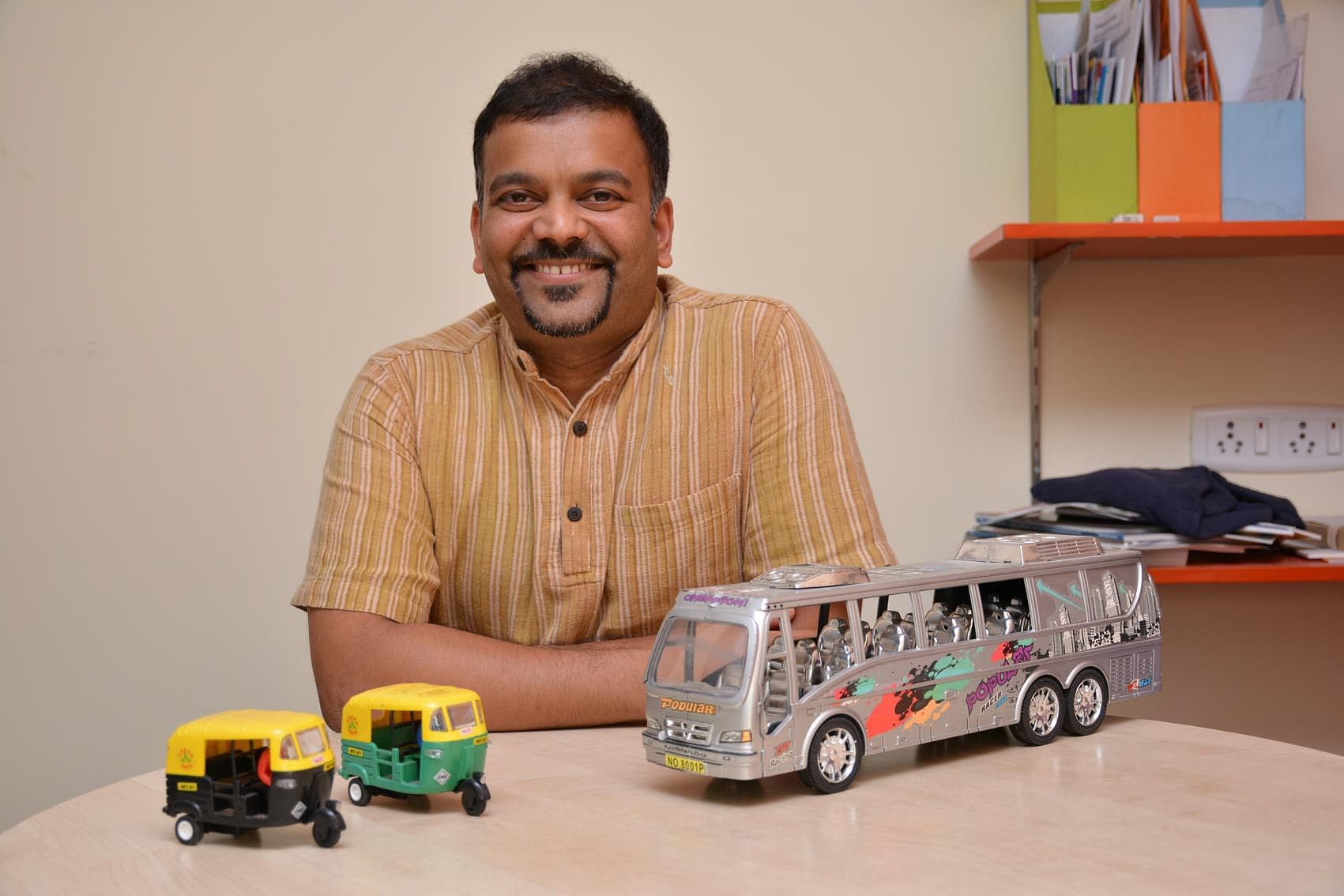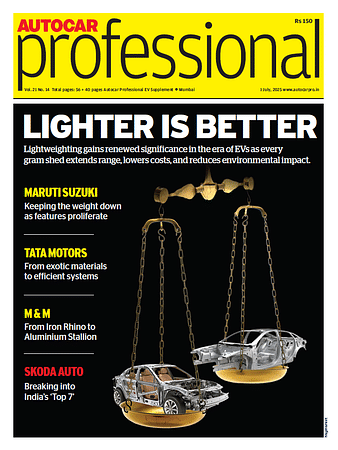Mumbai’s road safety gets a leg up
Bloomberg Philanthropies has chosen the city of Mumbai to implement some road safety initiatives that it hopes can be replicated in other cities worldwide. A report by Brian de Souza.
Bloomberg Philanthropies has chosen the city of Mumbai to implement some road safety initiatives that it hopes can be replicated in other cities worldwide. A report by Brian de Souza.
In early February, Bloomberg Philanthropies, a US-based charitable foundation said it had chosen Mumbai as one of 10 cities to fund road safety initiatives aimed at lowering road fatalities and enhancing pedestrian safety. As part of this, the foundation signed an MoU with the state government for funding worth Rs 100 crore.
Mumbai was one of 10 cities chosen from 20 applicant-cities worldwide from low and middle-income countries. As part of the campaign, which the Brihanmumbai Municipal Corporation (BMC) will implement, a variety of initiatives will be undertaken to make Mumbai safer for pedestrians.
Helping the BMC will be the India arm of the US-based not-for profit, World Resources Institute (WRI), which will basically function in an advisory capacity towards achieving this goal. Madhav Pai, director, sustainable cities, WRI India, puts things in perspective when he says that in Mumbai, 40 percent of its denizens walk to work; a similar number take public transport and actually walk to where they take public transport.
In terms of the city’s fatalities, Pai says that 70-80 percent to those who are die in accidents are pedestrians and, therefore, as one of the organisations involved in road safety, the priority of the Bloomberg-funded initiative will be pedestrian safety. “One may say that the need is for wider sidewalks but the bigger issue is road junctions. We need to re-design the junctions as people use them to access public transport; that is when a lot of deaths happen.”
As Pai puts it, “We need a different approach to junctions. We have the expertise and can work with municipal corporations. The fundamental approach should be through data-based interventions. He adds that rather than see traffic fatalities as mere first information reports or FIRs, the need is to take the more technical view by looking at the infrastructure, vehicles and the role of the driver. This needs to be done to re-create a sample of such an accident.”
KEEPING MUMBAI'S PEDESTRIANS SAFE
Mumbai has an estimated 400 fatalities a day. Many happen at road junctions where typically, the pedestrian does not know where to run. Traffic junctions, avers Pai, should be so designed that it tells the person where to go. Properly designed junctions are moreover safe for elderly folks as well as school children.
With the funding that Bloomberg Philanthropies is bringing in, Pai is confident that the measures implemented can cut road fatalities in Mumbai by 20-30 percent in five years’ time. Moreover, he says, the larger goal should be to design roads that are meant for cities. Currently, we use the use the guidelines of the Indian Roads Congress which is for highways, and “we need to differently-design city roads.”
To make the roads safer for pedestrians, Pai says that if we can ensure that cars move consistently at 20-25kph, we will see a decrease in road fatalities.
Moreover, this can be done by design. “We need slower roads in the cities by which I mean one should not speed beyond 25-30km. If you reduce a 3.5 metre road to 2.75, it will lower speed by 15km per hour. There will still be place for buses,” Pai remarks. In his view, projects such as elevated roads and coastal roads do not constitute the ideal solution.
Another area that needs to be tackled is parking. Paid parking lots are the way forward, he says, and should reflect the cost of land involved.
WRI India has already worked with the municipal corporation on planning the access to the metro stations, and from that as a take-off point, can work on roads that suit urban traffic requirements.
SOCIAL MATTERS
Bloomberg Philanthropies will also fund campaigns on social awareness centered around traffic safety. According to Pai, issues such as drink-related driving and the wearing of seatbelts and helmet will also be taken up. WRI India has roped in Union North America to implement social campaigns that will leverage social media. These funds will be used to enable the traffic police operate campaigns effectively.
WRI India’s inputs will also include structural aspects that include public transport, eliminating parking and making traffic move slower. “Our role is advisory and it is up to the municipality to do the necessary implementation,” says Pai.
Mumbai was chosen for the Bloomberg Philanthropies funding in order to portray the city as an example for the rest of country, indeed the world. A big part of this exercise is to see how cities can learn from each other, explains Pai.
Much can be done in the area of public transport by pushing for the Bus Rapid Transport System. Pai says that the system can work successfully moving tens of thousands of people in an eco-friendly manner.
“We are missing the boat if we do not have this system. Many cities have had this including Rio de Janeiro in Brazil for the 2014 World Cup football. There are bad and good BRTS and the good ones in India are at Ahmedabad, Surat and Indore,” Pai signs off on a pragmatic note.
Q&A WITH MADHAV PAI, DIRECTOR, WRI INDIA SUSTAINABLE CITIES, WRI INDIA

Can you wean people away from the car?
From a health point of view, we are struggling with weight, diabetes and blood pressure and there is a correlation between using private cars and such health conditions. If you walk for 90 minutes a week, you will suffer less from these conditions.
By using public transport, you will walk 150 minutes a week. It is now a personal choice, should you spend time on the treadmill or walk? It is important to use public transport. The speed at which BEST buses travel is down 20 percent; fewer commuters are carried. BEST’s ridership was about 4 million passengers in 1991 and the figure has remained unchanged in 2014, so the bus system is not taking more passengers even though the number of buses has gone up. If we can prioritise buses, it is possible to double BEST’s ridership. In an advisory issue, this will be part of what WRI India will do.
So you will advocate more transport-based systems?
This will not only lower congestion but will make lives safe and healthy, and will have a positive effect on the country's GDP.
A lot of the roads in Mumbai are a legacy of the British. The number of cars have now increased and it is chaotic. How do we handle this?
If I may take a global example, New York has closed roads, built cycle tracks and traffic has moved faster and at a consistent speed. People have shifted to bikes in New York, and there have been mode shifts to buses. In Mumbai’s case for the seven percent who use cars, why make a majority of people suffer?
I am not against cars but if we could lower the usage of cars, it would help. At the end of the day, cars and fuel are subsidised by the public, so we should make vehicle owners pay for using the road. Talk of building a coastal road with no toll paid is not the right way to go.
We focused on cars as part of car safety but what about two-wheelers?
We did a study in Pune and it was terrifying. Forty percent of respondents said that they had personally been in involved in up to six two-wheeler accidents. There is no policy for two-wheelers apart from enforcing helmets.
In Pune, 70 percent of motorised travel comprises two-wheelers; the roads are developed for cars. This holds true for all cities except for Mumbai.
India’s society is now aspirational, and cars are a part of that, so how do we handle this?
We have to conscientise the government first. We will have three experts in BMC and will work on the plan and once it is agreed on, we begin work immediately. We hope to begin in April-May.
Will the plan be in the public domain?
That will depend on the municipal corporation, and I feel they will want to do so.
What are your views on congestion tax that London has?
It has been an expensive exercise. Parking is a powerful instrument to make people to pay what it costs. Parking in business districts is a case in point. If we have a well-planned and implemented parking policy, we don’t need congestion tax.
The new state government talks about mega infrastructure projects but all this conveys is the idea that one should buy a car. What about public transport, or BEST, we never hear that message. If Mumbai is serious about improving bus transport, we are ready to help.
RELATED ARTICLES
How Venkat Thimaraju Bridged Mines and Machines for Daimler
From a young engineer's vision : Daimler India unleashes next-Gen trucks for India's booming construction and mining sec...
Tata Motors: From Ice Legacy To Electric Intelligence
Tata Motors has a lot riding on the newly launched Harrier EV, coming as it does on a fresh, EV-oriented software platfo...
Complete List of Cars and SUVs Tested by Bharat NCAP
Bharat NCAP has crash-tested 20 models to date, including both ICE-powered vehicles and EVs.





 03 Jun 2015
03 Jun 2015
 5405 Views
5405 Views





 Shahkar Abidi
Shahkar Abidi


 Ketan Thakkar
Ketan Thakkar


